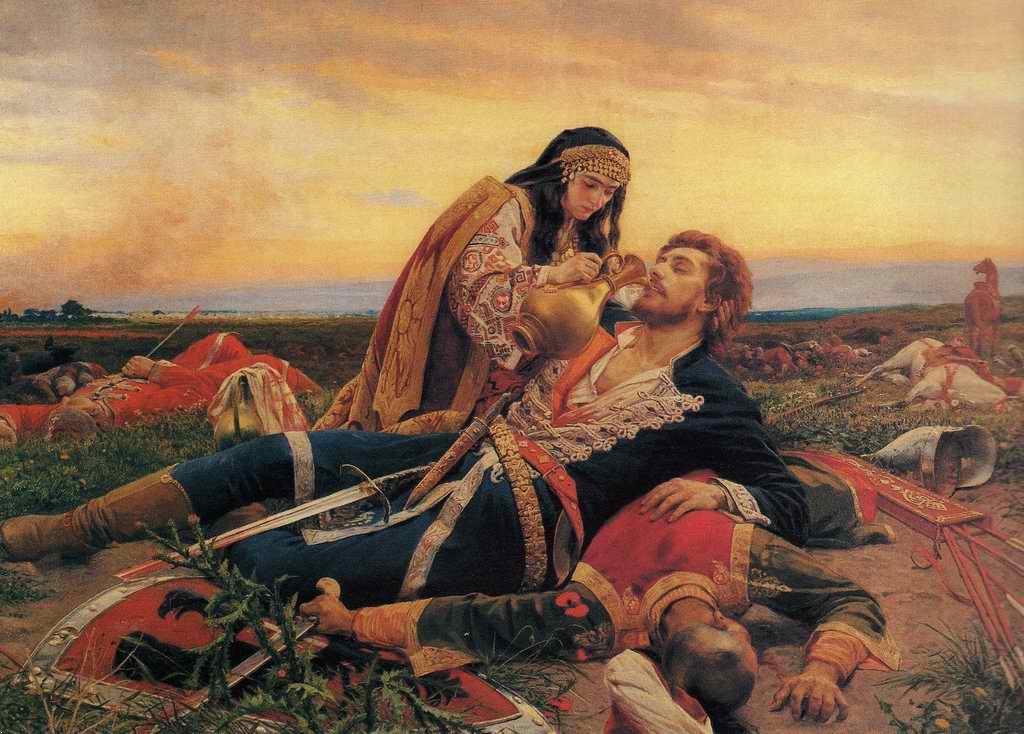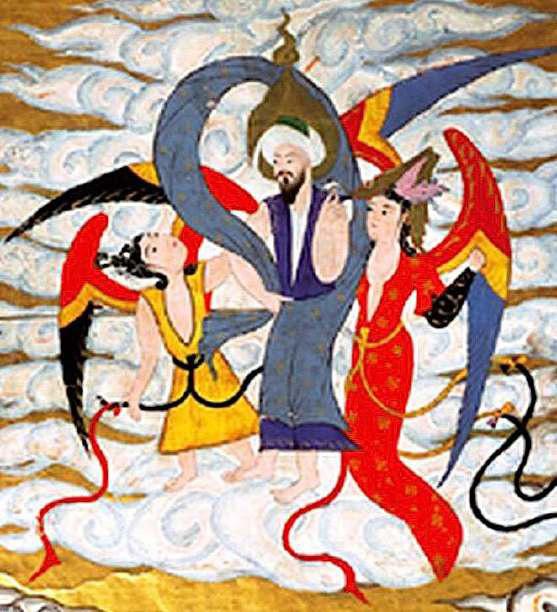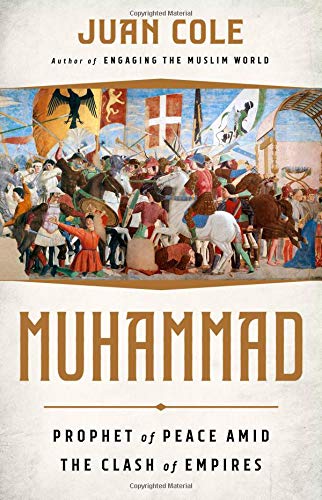Why Eastern Europeans are much more reluctant to accept Muslim migrants than their Western counterparts can be traced back to circumstances surrounding a pivotal battle, that of Kosovo, which took place on June 15, 1389, exactly 630 years ago today. It pitted Muslim invaders against Eastern European defenders, or the ancestors of those many Eastern Europeans today who are resistant to Islam.
Because the jihad is as old as Islam, it has been championed by diverse peoples throughout the centuries (Arabs in the Middle East, Moors (Berbers and Africans) in Spain and Western Europe, etc.). Islam’s successful entry into Eastern Europe was spearheaded by the Turks, specifically that tribe centered in westernmost Anatolia (or Asia Minor) and thus nearest to Europe, the Ottoman Turks, so-named after their founder Osman Bey. As he lay dying in 1323, his parting words to his son and successor, Orhan, were for him “to propagate Islam by yours arms.”
This his son certainly did; the traveler Ibn Batutua, who once met Orhan in Bursa, observed that, although the jihadi had captured some one hundred Byzantine fortresses, “he had never stayed for a whole month in any one town,” because he “fights with the infidels continually and keeps them under siege.” Christian cities fell like dominos: Smyrna in 1329, Nicaea in 1331, and Nicomedia in 1337. By 1340, the whole of northwest Anatolia was under Turkic control. By now and to quote a European contemporary, “the foes of the cross, and the killers of the Christian people, that is, the Turks, [were] separated from Constantinople by a channel of three or four miles.”
By 1354, the Ottoman Turks, under Orhan’s son, Suleiman, managed to cross over the Dardanelles and into the abandoned fortress town of Gallipoli, thereby establishing their first foothold in Europe: “Where there were churches he destroyed them or converted them to mosques,” writes an Ottoman chronicler: “Where there were bells, Suleiman broke them up and cast them into fires. Thus, in place of bells there were now muezzins.”
Cleansed of all Christian “filth,” Gallipoli became, as a later Ottoman bey boasted, “the Muslim throat that gulps down every Christian nation—that chokes and destroys the Christians.” From this dilapidated but strategically situated fortress town, the Ottomans launched a campaign of terror throughout the countryside, always convinced they were doing God’s work. “They live by the bow, the sword, and debauchery, finding pleasure in taking slaves, devoting themselves to murder, pillage, spoil,” explained Gregory Palamas, an Orthodox metropolitan who was taken captive in Gallipoli, adding, “and not only do they commit these crimes, but even—what an aberration—they believe that God approves them!”
After Orhan’s death in 1360 and under his son Murad I—the first of his line to adopt the title “Sultan”—the westward jihad into the Balkans began in earnest and was unstoppable. By 1371 he had annexed portions of Bulgaria and Macedonia to his sultanate, which now so engulfed Constantinople that “a citizen could leave the empire simply by walking outside the city gates.”
Unsurprisingly, then, when Prince Lazar of Serbia (b. 1330) defeated Murad’s invading forces in 1387, “there was wild rejoicing among the Slavs of the Balkans. Serbians, Bosnians, Albanians, Bulgarians, Wallachians, and Hungarians from the frontier provinces all rallied around Lazar as never before, in a determination to drive the Turks out of Europe.”
Murad responded to this effrontery on June 15, 1389, in Kosovo. There, a Serbian-majority coalition augmented by Hungarian, Polish, and Romanian contingents—twelve thousand men under the leadership of Lazar—fought thirty thousand Ottomans under the leadership of the sultan himself. Despite the initial downpour of Turkic arrows, the Serbian heavy cavalry plummeted through the Ottoman frontlines and broke the left wing; the Ottoman right, under Murad’s elder son Bayezid, reeled around and engulfed the Christians. The chaotic clash continued for hours.
On the night before battle, Murad had beseeched Allah “for the favour of dying for the true faith, the martyr’s death.” Sometime near the end of battle, his prayer was granted. According to tradition, Miloš Obilić, a Serbian knight, offered to defect to the Ottomans on condition that, in view of his own high rank, he be permitted to submit before the sultan himself. They brought him before Murad and, after Milos knelt in false submission, he lunged at and plunged a dagger deep into the Muslim warlord’s stomach (other sources say “with two thrusts which came out at his back”). The sultan’s otherwise slow guards responded by hacking the Serb to pieces. Drenched in and spluttering out blood, Murad lived long enough to see his archenemy, the by now captured Lazar, brought before him, tortured, and beheaded. A small conciliation, it may have put a smile on the dying martyr’s face.
Murad’s son Bayezid instantly took charge: “His first act as Sultan, over his father’s dead body, was to order the death, by strangulation with a bowstring, of his brother. This was Yaqub, his fellow-commander in the battle, who had won distinction in the field and popularity with his troops.” Next Bayezid brought the battle to a decisive end; he threw everything he had at the enemy, leading to the slaughter of every last Christian—but even more of his own men in the process.
So many birds flocked to and feasted on the vast field of carrion that posterity remembered Kosovo as the “Field of Blackbirds.” Though essentially a draw—or at best a Pyrrhic victory for the Ottomans—the Serbs, with less men and resources to start with in comparison to the ascendant Muslim empire, felt the sting more.
In the years following the battle of Kosovo, the Ottoman war machine became unstoppable: the nations of the Balkans were conquered by the Muslims—after withstanding a millennium of jihads, Constantinople itself permanently fell to Islam in 1453—and they remained under Ottoman rule for centuries.
The collective memory of Eastern Europeans’ not too distant experiences with and under Islam should never be underestimated when considering why they are significantly more wary of—if not downright hostile to—Islam and its migrants compared to their Western, liberal counterparts.
As Hungarian Prime Minister Victor Orbán once explained:
“We don’t want to criticize France, Belgium, any other country, but we think all countries have a right to decide whether they want to have a large number of Muslims in their countries. If they want to live together with them, they can. We don’t want to and I think we have a right to decide that we do not want a large number of Muslim people in our country. We do not like the consequences of having a large number of Muslim communities that we see in other countries, and I do not see any reason for anyone else to force us to create ways of living together in Hungary that we do not want to see…. I have to say that when it comes to living together with Muslim communities, we are the only ones who have experience because we had the possibility to go “through that experience for 150 years.”
And those years—1541 to 1699, when the Islamic Ottoman Empire occupied Hungary—are replete with the massacre, enslavement, and rape of Hungarians.
This is an excerpt from Raymond Ibrahim’s book, Sword and Scimitar: Fourteen Centuries of War between Islam and the West, which was also reviewed in the Postil here.
The photo shows, “The Kosovo Maiden,” by Uroš Predić, painted in 1919. The scene illustrates a scene from the poem, “The Kosovo Maiden,” from the Kosovo-cycle of Serbian poetry.


